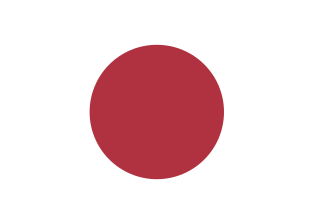 W
WIn 1895, all the islands of Taiwan, together with the Penghu Islands became a dependency of Japan when the Qing dynasty ceded Taiwan Province in the Treaty of Shimonoseki after the Japanese victory in the First Sino-Japanese War. The short-lived Republic of Formosa resistance movement was suppressed by Japanese troops and quickly defeated in the Capitulation of Tainan, ending organized resistance to Japanese occupation and inaugurating five decades of Taiwan under Japanese rule. Its administrative capital was in Taihoku (Taipei) led by the Governor-General of Taiwan.
 W
WThe Japanese invasion of Taiwan was a conflict between the Empire of Japan and the armed forces of the short-lived Republic of Formosa following the Qing Dynasty's cession of Taiwan to Japan in April 1895 at the end of the First Sino-Japanese War. The Japanese sought to take control of their new possession, while the Republican forces fought to resist Japanese occupation. The Japanese landed near Keelung on the northern coast of Taiwan on 29 May 1895, and in a five-month campaign swept southwards to Tainan. Although their advance was slowed by guerrilla activity, the Japanese defeated the Formosan forces whenever they attempted to make a stand. The Japanese victory at Baguashan on 27 August, the largest battle ever fought on Taiwanese soil, doomed the Formosan resistance to an early defeat. The fall of Tainan on 21 October ended organised resistance to Japanese occupation, and inaugurated five decades of Japanese rule in Taiwan.
 W
WThe Battle of Baguashan, the largest battle ever fought on Taiwanese soil, was the pivotal battle of the Japanese invasion of Taiwan. The battle, fought on 27 August 1895 near the city of Changhua in central Taiwan between the invading Japanese army and the forces of the short-lived Republic of Formosa, was a decisive Japanese victory, and doomed the Republic of Formosa to early extinction. The battle was one of the few occasions on which the Formosans were able to deploy artillery against the Japanese.
 W
WThe Battle of Changhsing, popularly known in Taiwan as the Battle of the Burning Village was the last set-piece battle during the Japanese invasion of Taiwan. It was fought by Hakka militia and armed civilians against the invading Imperial Japanese Army in Changhsing village (長興村). The battle earned its name from the fact that the entire village was burnt to the ground by the Japanese during their attempts to capture it from the Formosans.
 W
WBeer in Taiwan was dominated by monopoly products until 2002, when free trade became law in Taiwan. The main domestic brand remains Taiwan Beer, brewed by the publicly owned Taiwan Tobacco and Liquor Corporation that succeeded the government's monopoly bureau in 2002.
 W
WThe Beipu Incident, or the Beipu Uprising, in 1907 was the first instance of an armed local uprising against the Japanese rule of the island of Taiwan. In response to oppression of the local population by the Japanese authorities, a group of insurgents from the Hakka subgroup of Han Chinese and Saisiyat indigenous group in Hokuho, Shinchiku Chō, attacked Japanese officials and their families. In retaliation, Japanese military and police killed more than 100 Hakka people. The local uprising was the first of its kind in Taiwan under Japanese rule, and led to others over the following years.
 W
WCape No. 7 is a 2008 Taiwanese romantic musical drama film written and directed by Wei Te-sheng, his first full-length motion picture. The film is in Taiwanese and Mandarin with significant lines in Japanese. Before its commercial release, the film had its world premiere on 20 June 2008 at the 2008 Taipei Film Festival as the opening film. The film later won 3 awards at the festival.
 W
WThe Eternal Golden Castle, alternatively but less well known as Erkunshen Battery (二鯤鯓砲台), is a defensive castle in Anping District, Tainan, Taiwan.
 W
WGaoshi Shrine, formerly known as Kuskus Shrine , is a Shinto shrine located in Gaoshi, a Paiwan village in Mudan, Pingtung, Taiwan. With the original shrine destroyed by typhoon in 1946, a new shrine was rebuilt in 2015, making it the only Shinto shrine constructed in Taiwan in the post–World War II era, following the end of the island's Japanese rule. The current shrine is not affiliated with the Shinto religion but serves as a memorial for the Paiwan population lost in wars such as World War II.
 W
WCount Gotō Shinpei was a Japanese politician and cabinet minister of the Taishō and early Shōwa period Empire of Japan. He served as the head of civilian affairs of Taiwan under Japanese rule, the first director of the South Manchuria Railway, the seventh mayor of Tokyo City, the first Chief Scout of Japan, the first Director-General of NHK, the third principal of Takushoku University, and in a number of cabinet posts. Gotō was one of the most important politicians and administrators in Japanese national government during a time of modernization and reform in the late nineteenth and early twentieth centuries.
 W
WThe Government-General of Taiwan was the government that governed Taiwan under Japanese rule between 1895 and 1945.
 W
WThe Governor–General of Taiwan was the head of the Government-General of Taiwan in the Japanese era when they were part of the Empire of Japan, from 1895 to 1945.
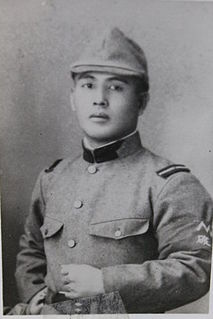 W
WOtoemon Hiroeda was a Japanese police officer posted to Zhunan, Miaoli in Japanese-era Taiwan. During the Pacific War, he disobeyed orders that he sacrifice the lives of 2000 Taiwanese soldiers under his command in a suicidal attack, and then killed himself. His actions resulted in a spirit tablet for him being enshrined within Quanhua Temple on Lion Head Mountain, Miaoli County, Taiwan.
 W
WHōko Prefecture was one of the administrative divisions of Taiwan during the Japanese ruling period from 1895 until 1945. The prefecture consisted of modern-day Penghu County.
 W
WHuatung Highway is a section of the Provincial Highway No. 9 in Taiwan. It starts at Hualien City and ends at Taitung City, thus its name. The highway runs the entire length of the Huatung Valley and is flanked by the Central Mountain Range and the Coastal Mountain Range. It was built by the Japanese government in 1933.
 W
WTaiwan is an island located off the coast of China. The Chinese and Taiwanese people have a long history together, with the first Han Chinese settlers arriving in Taiwan in the seventeenth century. The Japanese empire occupied Taiwan following its cessation from Qing dynasty China in the Treaty of Shimonoseki (1895) at the conclusion of the First Sino-Japanese War. This period of occupation lasted until the Japanese surrender of WW2. During this period the colonial government of Japan initiated major policies to reduce the consumption of opium and opium derived products with much regarded success from contemporary sources both from the Japanese Colonial government and international sources.
 W
WKarenkō Prefecture was one of the administrative divisions of Taiwan during the Japanese rule. The prefecture consisted of modern-day Hualien County.
 W
WKoreans in Taiwan are the 30th-largest population of overseas Koreans and the 9th-largest foreign community in Taiwan.
 W
WLiao Tianding was a legendary Taiwanese Robin Hood figure who foiled oppressive rulers when Taiwan was under Japanese rule.
 W
WThe motherland controversy happened in 1936 in colonial Taiwan of Japan. Lin Hsien-tang, the chief of the family of Lin from Wufeng, Taiwan, was openly humiliated by a Japanese gangster in 1936 for he had once called China his motherland. The media propaganda afterwards forced Lin to quit all political positions and moved from Taiwan to Tokyo in order to avoid further controversy. This controversy is believed to be deliberately raised by Japanese military, who tried to warn Taiwanese intellectuals about their Chinese nationalism.
 W
WThe Musha Incident (Chinese and Japanese: 霧社事件; pinyin: Wùshè Shìjiàn; Wade–Giles: Wu4-she4 Shih4-chien4; rōmaji: Musha Jiken; Pe̍h-ōe-jī: Bū-siā Sū-kiāⁿ), also known as the Wushe Rebellion and several other similar names, began in October 1930 and was the last major uprising against colonial Japanese forces in Japanese Taiwan. In response to long-term oppression by Japanese authorities, the Seediq Indigenous group in Musha (Wushe) attacked the village, killing over 130 Japanese. In response, the Japanese led a relentless counter-attack, killing over 600 Seediq in retaliation. The handling of the incident by the Japanese authorities was strongly criticized, leading to many changes in Aboriginal policy.
 W
WThe Pescadores campaign was the last military operation of the First Sino-Japanese War and an essential preliminary to the Japanese conquest of Taiwan.
 W
WThe Petition Movement for the Establishment of a Taiwanese Parliament took place in the first half of the twentieth century. It demanded that the Imperial Diet of Japan establish a self-governing parliament, or representative assembly, in Taiwan. Started by New People Society of Taiwan, this movement marked a transition in Taiwanese colonial politics, from armed resistance to modern political movement. It was the longest political movement during the Japanese occupation period of Taiwan..
 W
WQiu Fengjia or Chiu Feng-Chia was a Taiwanese Hakka−Chinese patriot, educator, and poet.
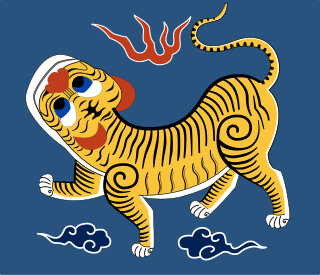 W
WThe Republic of Formosa was a short-lived republic that existed on the island of Taiwan in 1895 between the formal cession of Taiwan by the Qing dynasty of China to the Empire of Japan by the Treaty of Shimonoseki and its being taken over by Japanese troops. The Republic was proclaimed on 23 May 1895 and extinguished on 21 October, when the Republican capital Tainan was taken over by the Japanese. Though sometimes claimed as the first Asian republic to have been proclaimed, it was predated by the Lanfang Republic in Borneo, established in 1777, as well as by the Republic of Ezo in Japan, established in 1869.
 W
WRetrocession Day is the name given to the annual observance and unofficial holiday and former public holiday in Taiwan to commemorate the end of Japanese rule of Taiwan and Penghu, and the claimed retrocession ("return") of Taiwan to the Republic of China on October 25, 1945. However, the idea of "Taiwan retrocession" is in dispute.
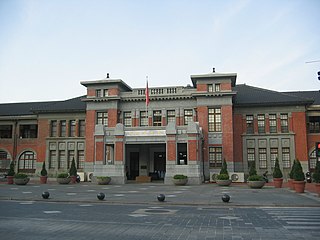 W
WShinchiku Prefecture was one of the administrative divisions of Taiwan during the Japanese era. The prefecture consisted of modern-day Hsinchu City, Hsinchu County, Taoyuan City, and Miaoli County.
 W
WTaichū Prefecture was one of the administrative divisions of Japanese Taiwan. The prefecture consisted of modern-day Taichung City, Changhua County and Nantou County. It is also the origin of the name of modern-day Taichung. The Taichū Prefecture was the scene of the 1930 Musha Incident, the last major uprising against colonial Japanese forces in Japanese Taiwan.
 W
WTaihoku Prefecture was an administrative division of Taiwan created in 1920, during Japanese rule. The prefecture consisted of modern-day Keelung, New Taipei City, Taipei and Yilan County. Its government office, which is now occupied by the Control Yuan of Taiwan, was in Taihoku City.
 W
WTainan Prefecture was one of the administrative divisions of Taiwan during the Japanese rule. The prefecture consisted of modern-day Tainan City, Chiayi City, Chiayi County and Yunlin County.
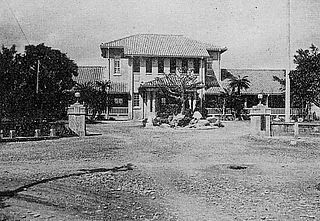 W
WTaitō Prefecture was one of the administrative divisions of Taiwan during the Japanese rule. The prefecture consisted of modern-day Taitung County.
 W
WThe Taiwan Army of Japan was an army of the Imperial Japanese Army recruited from, and stationed on, the island of Taiwan as a garrison force.
 W
WThe Taiwan Grand Shrine was the highest ranking Japanese Shinto shrine in Taiwan during Japanese colonial rule. It was located in Taihoku, Taiwan. Among the officially sanctioned Shinto shrines in Taiwan, Taiwan Grand Shrine held the highest rank of them all. The Grand Hotel stands at the shrine's former site.
 W
WA Taiwanese Imperial Japan Serviceman is any Taiwanese person who served in the Imperial Japanese Army or Navy during World War II whether as a soldier, a sailor, or in another non-combat capacity. According to statistics provided by Japan's Ministry of Health, Labour and Welfare, during the Second Sino-Japanese War and the subsequent World War II, a total of 207,183 Taiwanese served in the military of Imperial Japan and 30,304 of them were declared killed or missing in action.
 W
WTaiwanese kana is a katakana-based writing system that was used to write Taiwanese Hokkien when the island of Taiwan was under Japanese rule. It functioned as a phonetic guide to hanzi, much like furigana in Japanese or Zhuyin fuhao in Chinese. There were similar systems for other languages in Taiwan as well, including Hakka and Formosan languages.
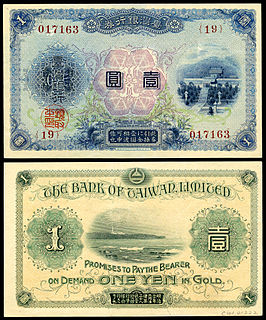 W
WThe Taiwanese yen was the currency of Japanese Taiwan from 1895 to 1946. It was on a par with and circulated alongside the Japanese yen. The yen was subdivided into 100 sen (錢). It was replaced by the Old Taiwan dollar in 1946, which in turn was replaced by the New Taiwan dollar in 1949.
 W
WTakao Prefecture was one of the administrative divisions of Taiwan during the Japanese rule. The prefecture consisted of modern-day Kaohsiung City and Pingtung County.
 W
WTakasago Volunteers were volunteer soldiers in the Imperial Japanese Army recruited from the Taiwanese Indigenous Peoples during World War II.
 W
WThe Tapani incident or Tapani uprising in 1915 was one of the biggest armed uprisings by Taiwanese Han and Aboriginals, including Taivoan, against Japanese rule in Taiwan. Alternative names used to refer to the incident include the Xilai Temple Incident after the Xilai Temple in Tainan, where the revolt began, and the Yu Qingfang Incident after the leader Yu Qingfang.
 W
WThe Treaty of Shimonoseki , also known as Treaty of Maguan in China and Treaty of Bakan in the period before and during WWII in Japan, was a treaty signed at the Shunpanrō hotel (春帆樓), Shimonoseki, Japan on 17 April 1895, between the Empire of Japan and Qing China, ending the First Sino-Japanese War. The peace conference took place from 20 March to 17 April 1895. This treaty followed and superseded the Sino-Japanese Friendship and Trade Treaty of 1871.
 W
WWarriors of the Rainbow: Seediq Bale is a 2011 Taiwanese historical drama film directed by Wei Te-sheng and produced by John Woo, based on the 1930 Wushe Incident in central Taiwan.